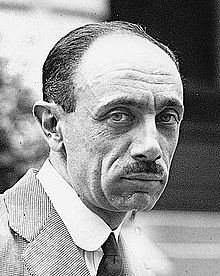Pál Teleki
|
Count Pál Teleki de Szék |
|
|---|---|

Pál Teleki, in 1921, six months after his first tenure as Prime Minister
|
|
| Prime Minister of the Kingdom of Hungary | |
|
In office 19 July 1920 – 14 April 1921 |
|
| Monarch |
Miklós Horthy as Regent |
| Preceded by | Sándor Simonyi-Semadam |
| Succeeded by | István Bethlen |
|
In office 16 February 1939 – 3 April 1941 |
|
| Monarch |
Miklós Horthy as Regent |
| Preceded by | Béla Imrédy |
| Succeeded by | László Bárdossy |
| Minister of Religion and Education | |
|
In office 14 May 1938 – 16 February 1939 |
|
| Prime Minister | Béla Imrédy |
| Preceded by | Bálint Hóman |
| Succeeded by | Bálint Hóman |
| Minister of Foreign Affairs | |
|
In office 19 April 1920 – 22 September 1920 |
|
| Prime Minister | Béla Imrédy |
| Preceded by | Sándor Simonyi-Semadam (Acting) |
| Succeeded by | Imre Csáky |
| Member of the House of Representatives | |
|
In office 21 February 1905 – 23 June 1910 |
|
| Constituency | Nagysomkút |
|
In office 18 February 1920 – 19 October 1926 |
|
| Constituency | Szeged |
|
In office 20 May 1938 – 3 April 1941 |
|
| Constituency |
Tokaj Szeged |
| Personal details | |
| Born |
1 November 1879 Budapest, Kingdom of Hungary, Austria-Hungary |
| Died | 3 April 1941 (aged 61) Budapest, Kingdom of Hungary |
| Nationality | Hungarian |
| Occupation | Prime minister twice, from 1920–21 and 1939–41 |
| Known for | Prime Minister of Hungary twice, University professor, member of the Hungarian Academy of Sciences, Chief Scout of the Hungarian Scout Association, expert in geography |
Count Pál János Ede Teleki de Szék (1 November 1879 – 3 April 1941) was prime minister of the Kingdom of Hungary from 19 July 1920 to 14 April 1921 and from 16 February 1939 to 3 April 1941. He was also a famous expert in geography, a university professor, a member of the Hungarian Academy of Sciences, and Chief Scout of the Hungarian Scout Association. He descended from a noble family from Alsótelek in Transylvania.
He is a controversial figure in Hungarian history because as Prime Minister he tried to preserve Hungarian autonomy under difficult political circumstances, but also proposed and enacted far-reaching anti-Jewish laws.
Teleki was born to Géza Teleki (1844–1913), a Hungarian politician and Minister of the Interior, and his wife Irén Muráty (Muratisz) (1852–1941), the daughter of a wealthy Greek merchant, in Budapest, Hungary. He attended Budapest Lutheran elementary school from 1885–1889, and Pest Calasanz High School ("gymnazium") from 1889–1897. In 1897 he started upper-division work at Budapest University studying law and political science. Teleki then studied at the Royal Hungarian Academy of Economy in Magyaróvár (Magyaróvári Magyar Királyi Gazdasági Akadémia), and after struggling to complete his studies, graduated with a PhD in 1903. He went on to become a university professor and expert on geography and socio-economic affairs in pre-World War I Hungary and a well-respected educator. For instance, Erik von Kuehnelt-Leddihn was one of his students. He fought in the First World War as a volunteer.
In 1918–19, he compiled and published the first map depicting the ethnographic make up of the Hungarian nation. Based on the density of population according to the 1910 census, the so-called Red map was created for the peace talk in Treaty of Trianon. His maps were an excellent composition of social and geographic data, even by today's well-developed Geographic Information System's point of view. From 1911–1913 he was Director of Scientific Publishing for the Institute of Geography, and from 1910–1923 he was Secretary General of the Geographical Society. He was a delegate to the Versailles Peace Conference in 1919.
...
Wikipedia
